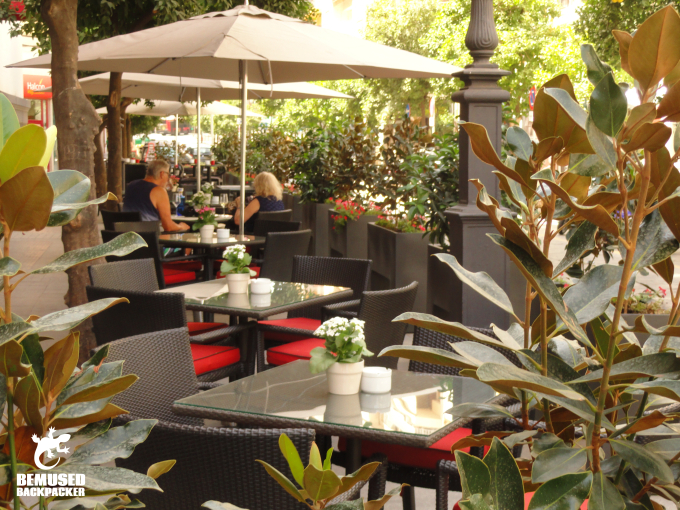Spanish culture is often a bit of a shock to travellers used to a more serious, formal way of life, here is your easy travel guide to settling into daily life in Spain.
My very first trip to Spain many years ago was marked by my very British body clock trying to get used to eating way past my normal tea time, or dinner time for you non northerners out there, and having regular naps through the day. This wasn’t helped by the fact that my abysmal language skills still kept getting me looks of amused pity on many subsequent visits over the years.
Eventually though the Spanish way of life won me over. Their extroverted nature (sometimes hidden behind a reserved exterior), passion for life and paradoxical laissez faire attitude to the less important things became second nature, a wake up call that made me reassess a few priorities.
For most travellers new to Spain however, this focus on la buena vuda can be a little confusing at first. Why is everything shut in the middle of the day? Why is everyone eating so late? Don’t worry, let me take you through a typical day in Spain.
Like anywhere else in the world the day always starts off with the most important meal, breakfast. In Spain however time is a little different. There is no real urgency to start the day, so no need to fill your body with enough food and energy to get you through the entire morning. Not yet, anyway.
A traditional Spanish breakfast for most people is enjoyed on the go at a small cafe, and consists of a simple ubiquitous coffee, a cafe con leche or cafe corridor, plus some toast or a light pastry. Nothing too heavy and just enough to give your morning a start.
The second pick me up happens at mid morning, usually consisting of another coffee and maybe another sweet pastry. Like the Italians, the Spanish are particular about drinking specific coffees at specific times, but aren’t quite as murderous if you get it wrong. Now of course it is time for a cafe, or basically an espresso. Time to wake up properly now.
Lunch time usually starts at 1200 and is relatively light in most places. Spain however does things a little different. Usually starting between 1300 and 1400, lunch is the big meal of the day, not breakfast! It isn’t uncommon to see appetisers and starters, a large main meal with meat or fish, and of course a good wine and some dessert with coffee!
And what do we all want to do after a big hearty meal? Sleep of course! This is where in my opinion the Spanish have a very sensible and healthy outlook on life, and also where most first time visitors get confused as to why everything is shut, because it is siesta time! Usually between 1400 and 1600 (although these times aren’t fixed), this is where everything shuts down and everyone goes home t their families. It also makes perfect sense to go and lie down at the hottest part of the day!

Dinner time in most of Europe is around 1700, this is when many people are getting home from work and seeing their families gor the main meal. In Spain, many people have just gotten back to work after their siesta, and for those who aren’t working it is time for merienda. This is the time to enjoy tapas with a glass of wine or other drink. Tapas is basically a series of small snacks like olives or bread and olive oil. Basically snack and drink to your hearts content until the evening time, when most people finish work at around 2000.
The evening is a really nice time in Spain, after snacking on tapas all afternoon this is when everyone kicks off work and spill out onto the streets, bars ad restaurants. The air is cooler, children are playing in the streets and everyone goes for a stroll or enjoys the last meal of the day at around 2200. This is what would be considered a light supper and is still usually quite a decent meal.
Of course most people end the day at around midnight, but for those who want to continue the night the clubs stay open until around 0500. But unlike the party islands full of British tourists, binge drinking is not a thing in Spain. So enjoy, but don’t go mad.
All in all the Spanish tend to draw the day out a little bit more. Things are done later, food and drink are enjoyed and savoured over a longer period and there is a strong emphasis on the life part of a work/life balance. Completely sensible in my opinion. It may take a little getting used to at first, but when you do you will fall in love with la buena vida!
Did you enjoy this article? I would love to hear your thoughts in the comments section below or on my Facebook or Twitter pages and please feel free to share it with any or all of the social media buttons. If you want to get more great backpacking tips, advice and inspiration, please subscribe to updates via email in the box to your right.
Related Articles.
5 Free things to do in Barcelona.
10 Things You Have To See And Do In Granada.
A Guide For Settling Into The Backpacker Lifestyle.
Hitting The Language Barrier Hard.
The Seductive Soul Of Triana, Seville.
What Is Culture Shock And How Can Travellers Deal With It?
